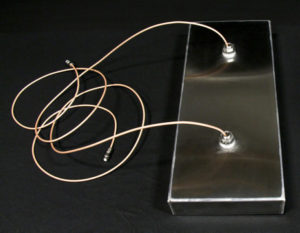
Introduction
Ultrasonic transducers have become vital in various industrial and scientific applications due to their ability to transmit and receive sound waves beyond the audible range of humans. Among these devices, submersible ultrasonic transducers are uniquely designed for use in underwater or submerged environments. This article explores the functionality, applications, design considerations, and advantages of submersible ultrasonic transducers.
What is a Submersible Ultrasonic Transducer?
A submersible ultrasonic transducer is a device that emits and detects ultrasonic waves while submerged in a liquid medium. Unlike standard ultrasonic transducers, these devices are specifically engineered to withstand continuous exposure to water or other liquids. They convert electrical energy into high-frequency sound waves (ultrasonic) and can also receive echoes reflected from objects, which are then converted back into electrical signals for analysis.
How Do Submersible Ultrasonic Transducers Work?
The working principle of submersible ultrasonic transducers is based on the piezoelectric effect. When an electrical signal is applied to a piezoelectric material, it vibrates at ultrasonic frequencies, creating sound waves. These waves travel through the water, reflecting off objects, bubbles, or other particles in their path. The transducer can then detect the returning echoes, converting them back into electrical signals that can be analyzed to determine distance, size, or density of the objects encountered.
Applications of Submersible Ultrasonic Transducers
- Marine and Underwater Navigation
Submersible ultrasonic transducers are commonly used in sonar systems for navigation, obstacle detection, and mapping the seafloor. They help in identifying underwater structures, shipwrecks, and schools of fish by emitting ultrasonic waves and analyzing the reflected signals.
- Liquid Level Measurement
These transducers can precisely measure the level of liquids in tanks, reservoirs, and open water bodies. They are useful in monitoring water levels in industrial processes, wastewater treatment plants, and hydropower stations.
- Underwater Research and Exploration
Ultrasonic transducers are essential in marine biology and underwater archaeology. They enable researchers to study aquatic life, underwater ecosystems, and submerged archaeological sites without disturbing the environment.
- Industrial Cleaning
Submersible ultrasonic transducers are integrated into cleaning tanks to remove contaminants from surfaces using high-frequency sound waves. This process, known as ultrasonic cleaning, is efficient for cleaning delicate parts, such as medical instruments, electronic components, and automotive parts.
- Non-Destructive Testing (NDT)
In the oil, gas, and power generation industries, submersible ultrasonic transducers are used for non-destructive testing of submerged equipment. They can inspect underwater pipelines, storage tanks, and ship hulls for cracks, corrosion, and other defects.
Design Considerations
- Material Selection
Since these transducers operate underwater, the materials used must resist corrosion and withstand long-term exposure to liquids. Stainless steel, titanium, and various polymer coatings are commonly used to protect the transducer components.
- Frequency and Power Output
The operating frequency and power output of the transducer determine the resolution and penetration depth of the ultrasonic waves. Higher frequencies provide better resolution but lower penetration, making them suitable for detecting small objects. Lower frequencies can penetrate deeper, making them ideal for applications like depth measurement and sonar.
- Sealing and Waterproofing
Proper sealing is critical for ensuring that the transducer remains operational while submerged. The device must be hermetically sealed to prevent water ingress, which can damage internal components. O-rings, epoxy resin, and other sealing methods are typically employed to ensure watertight integrity.
- Shape and Size
The design of submersible transducers varies depending on their intended application. For example, cylindrical transducers are commonly used for directional sonar, while flat or dome-shaped designs are often used for broader area coverage in cleaning tanks or non-destructive testing.
Advantages of Submersible Ultrasonic Transducers
- Durability and Reliability
Designed to withstand harsh underwater environments, submersible ultrasonic transducers offer long-term durability and consistent performance. Their robust construction ensures they can operate reliably even in corrosive or high-pressure conditions.
- Non-Intrusive Measurement
Ultrasonic transducers are non-intrusive, meaning they can perform measurements without coming into direct contact with the object. This makes them ideal for applications where direct contact could disrupt the process or harm the equipment.
- High Precision and Sensitivity
These devices provide accurate measurements, detecting even small changes in liquid levels or minute defects in submerged structures. Their high sensitivity makes them valuable in scenarios where precision is critical.
- Versatile Applications
From industrial cleaning to marine exploration, submersible ultrasonic transducers have versatile applications across various fields. This versatility makes them a valuable asset in any industry requiring underwater measurements or operations.
Conclusion
Submersible ultrasonic transducers are an essential tool for various underwater and industrial applications. Their ability to emit and detect ultrasonic waves in submerged conditions allows them to play a crucial role in fields such as marine navigation, industrial cleaning, and non-destructive testing. The design and construction of these devices ensure they can withstand challenging environments, making them reliable and durable solutions for professionals. As technology advances, the potential applications for submersible ultrasonic transducers are likely to expand, opening up new possibilities for underwater exploration and industrial processes.

